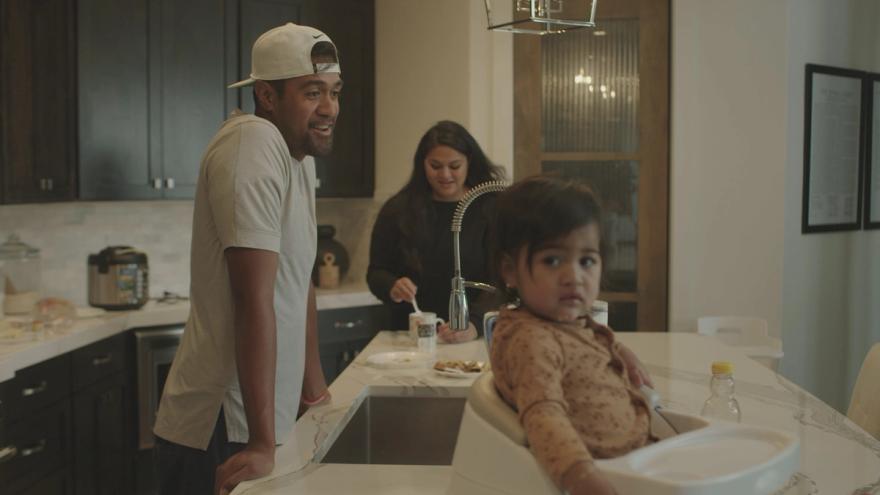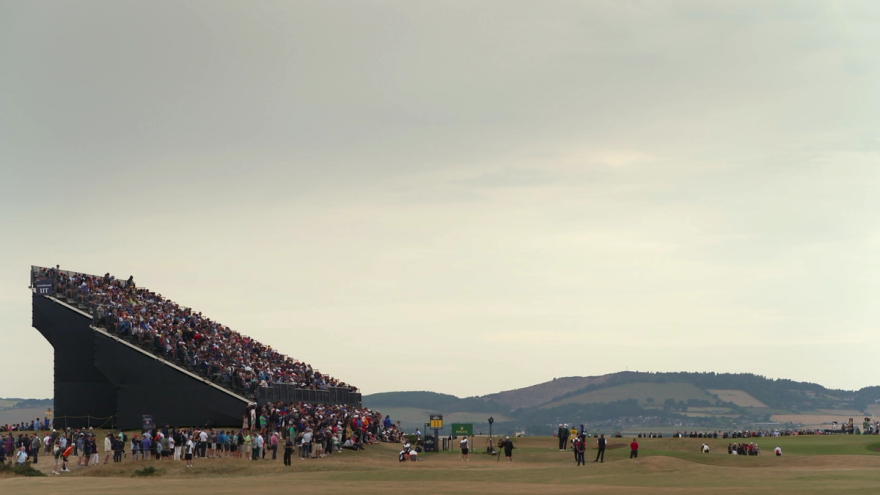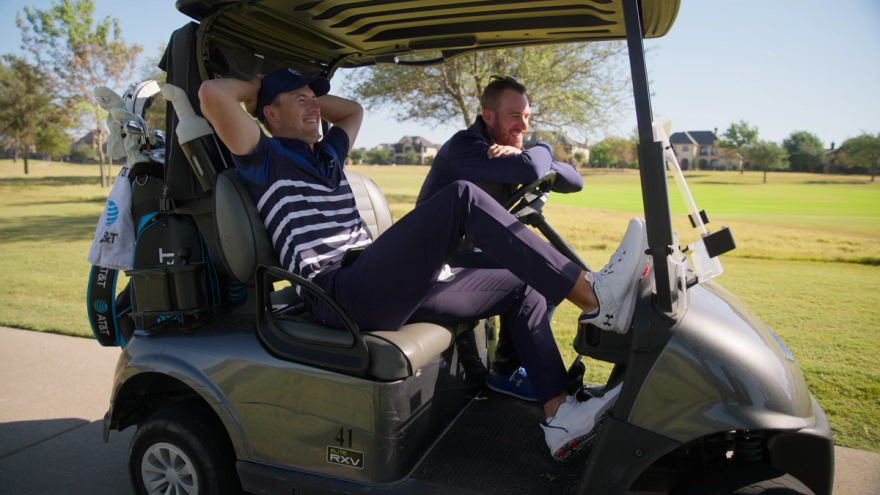One thing we probably don’t say out loud enough is just how different golf is from other sports.
If you’re a recreational player, this is something to be embraced and is probably one of the things you love the most about the game. And if you’re in the golf industry, where TV ratings, revenues, salaries and day-to-day drama are dwarfed by nearly every other professional sport, this feels like an existential dilemma to solve.
Netflix’s newly-released “Full Swing” series is professional golf’s moon shot for this problem. The eight-episode docuseries is unabashedly designed to bring new fans into the game the way Formula 1’s “Drive to Survive” rocketed to the top of American watch lists during the pandemic. No one understands this phenomenon more than me – a guy who didn’t know which direction the cars drove at the beginning of 2020 and was participating in F1 fantasy leagues by 2021.
But the differences between F1 and golf are, needless to say, vast. Let’s start with simply comparing the titles. “Drive to Survive” immediately calls to mind the danger and drama inherent to F1, while “Full Swing’s” stakes are naturally going to be exponentially lower. This is the first sign that “Drive to Survive” shouldn’t be a paint by numbers template for other (slower) sports.
I, along with millions of my friends, was thrilled to parachute into the brand new world of F1 due to a number of different circumstances. Fast cars, exotic settings, team swapping and general bitchiness was a perfect fit for me at a time where live sports were on pause. Watching post-produced races from a year ago (races whose outcomes I had no idea about) was the perfect COVID watch when little else was on TV. And when I made the jump to watching F1 races live, the telecasts were exceptional – commercial-free, engaging and easy for beginners to follow.

Golf has a comical amount of inhibitors for new fans. It’s brutally difficult to play, to understand, to follow and, perhaps most of all, to pay for. It takes far too long and is, even on its best days, almost irredeemably dorky. Large parts of the game have seemingly been set up to actively drive people away for all kinds of hateful and/or stupid reasons. And the professional product has started to feel like a 10-year-long commercial with a few occasional golf shots mixed in. As it exists today, golf was basically designed in a lab to never become a mainstream sport. And somehow, despite all of this, golf (at least on the recreational side) has more momentum than it's had in decades.
But pro golf’s superpower – the thing that makes people turn on their TV’s – is relatability. When I flipped on F1, I had no expectation to ever understand what it feels like to drive a car into Turn 4 at the Circuit of the Americas. I don’t know what it’s like to dunk a basketball or hit a home run. But when I watch Rory McIlroy hit a short-sided bunker shot, I understand exactly what the challenge is. I can relate to having nerves over a 4-footer and a shot that comes a foot short of clearing a bunker lip. This feeling is the biggest value pro golf offers. And trying to sell the slow, often-vanilla sport without that feeling included has always felt like a bit of a doomed proposition.
Formula 1 is built as a pure entertainment product. Watching golf is much more complicated than that. It’s part relaxation, part instructional video, part therapy session and part physics lesson. And it’s the sum of those parts – and the way they slowly develop and come together to a crescendo over the finishing stretch – that adds up to the entertainment product. I’m not sure there’s a way to shortcut it.

It’s been tough to have any conversation in the golf industry the past year without a mention of what the new Netflix series “could do for the game.” And it undoubtedly will be a net positive. The way that golf’s governing bodies and top players aligned to provide unprecedented access and footage is massively impressive considering golf’s hesitation to evolve for the past, say, 300 years. The world will certainly have more Joel Dahmen and Sahith Theegala fans by next week. The Brooks Koepka episode is a fascinating look at a player being torn between an egotistical defense mechanism and his impending golf mortality. Unfortunately for Randy and I, Tony Finau is a delight to watch and we get to watch Ian Poulter step on a few rakes tonally, which is fun.
If we’re looking at golf obsession as a 1 to 10 scale, there’s no doubt “Full Swing” will succeed in taking golf fans from a three to a five or a five to a seven because there's a lot to enjoy. But with such a focus on #GrowingTheGame, I’m left wondering whether it will make any zeros reconsider their stance.
The thing about appealing to everyone is that suddenly you have to compete with everything. In order to do this, “Full Swing,” understandably chooses to cut back on the nitty gritty moments and insights that make us terminally ill golf sickos tune in every week. But even with unprecedented access, when you cut out the stuff that separates these golfers from every other golfer on the planet, what new fans are left with can feel fairly bland, particularly when compared to all the other things fans could be watching. (For my “Drive to Survive” people, golf has many more Otmar Szafnauers than Guenther Steiners.)
Leaning into the riches of pro golf doesn’t exactly work. We want to see the opulence in F1 because F1 isn’t real. It’s not relatable. It’s an imaginary world that exists in our TV’s where money is just a concept. But this has never been the bargain with golf, where the “athletes” remind us more of ourselves out there, playing the game that we play. You can understand how good they are because you can understand how bad you are.

Golf fans know that Jordan Spieth and Justin Thomas are not lacking in personality, as Episode 1 could convince some viewers. It’s just that their personalities are so defined by a lifelong golf obsession. That’s what makes the jokes funny. That’s what makes the betting games interesting. There’s a prerequisite class needed to decode it. When you try to avoid the X’s and O’s, the swing theories, the caddie conversations and the shot making, all you’re left with is a couple of dudes drawing cards on an airplane. If we're worried about turning people off by showing golfers playing golf... well, showing golfers not playing golf is rarely going to be an improvement.
There are very nice moments throughout the series – Mike Thomas discussing parenting a superstar and a great look at Finau’s family dynamic. There are little moments that will resonate with golf fans in a big way and help add dimension to the players we watch every week. But man. There’s a lot of content out there that has nice moments. It will be interesting to see if “Full Swing’s” are interesting enough to retain people who are encouraged to choose between it and [gestures toward inescapable black mass of other content instantly available at all times].
As a hardcore golf fan, this is what has become a bit deflating; watching golf try constantly to cater to an audience that seems destined to ignore it, rather than using the same energy to present the sport the way it deserves for those who already love it.
At its best, “Full Swing” still provides an intimate look at the revolving door of pro golf – Theegala on his way in and Koepka questioning whether he’s on his way out. But at its worst, it’s surface-level and a little boring. At times it feels artful, soulful and introspective. But often it feels like “Inside the PGA Tour With Some Swearing.”

And to have this takeaway during a year that will very likely be the most exciting and dramatic off-the-course year of my lifetime is particularly head-scratching. The LIV Golf alley oop of 2022 permeates through the entire season, but the show never seems to want to say the quiet parts out loud. This could be due to a number of factors, not least of which was a lack of participation from Phil, Bryson, Reed and other LIV defectors. A number of great talking heads are brought in to offer context, but rarely are they given the time to offer more than expository lines to move the narrative forward. All the player bickering and mudslinging that was clearly going on behind the scenes has dried up once the red dot turns on. Apart from one throwaway “I know the cameras are here but I’m going to say this anyway” comment from Rory about Mickelson, much of the LIV drama ends up packaged as a fairly emotionless stating of the facts.
Because the scope of the show is so large, it’s impossible to capture the ebbs and flows of a player’s season without feeling an inch deep and a mile wide. (Again, an understandable bargain geared toward creating a mix of big names and new faces to maximize interest.) By the time we get to McIlroy in the finale, there is so much ground to cover that we’re forced to skim through his historic career, his upbringing, his role in the LIV breakaway, The Open at St. Andrews, the Delaware meeting about restructuring the PGA Tour AND his FedExCup win in the span of a single episode. It ends up feeling much more like reading a Wikipedia page than an intimate portrait of what will likely be one of the most important and memorable years of his career.
None of this is to say that “Full Swing” is without promise. It’s made by an incredibly talented team of filmmakers and there is something powerful about simply seeing familiar players and situations through a more cinematic lens. It’s also possible Season 1 was more “proof of concept” than “swing for the fences.” This entire endeavor runs so counter to every instinct the golf industry has had for the past few decades that I’m sure there was an element of simply getting a W on the board for players, agents, sponsors, tours, tournaments and more.
Season 2, which is already filming, offers a chance to shine a light on more of what makes professional golfers truly fascinating. Most of them are too smart to ever say anything private on camera. The true personalities out on Tour are few and far between and “Full Swing” can always flex that muscle when it’s called for. But the one thing that everyone on Tour from Tom Hoge to Tiger Woods has in common is an obsessive genius and mastery of a game that millions of people are already chasing every single day. There is no one in the world better equipped to explain and showcase the art and science of being a genius at your craft.
Let us into that and trust that it’s the strongest asset golf has.